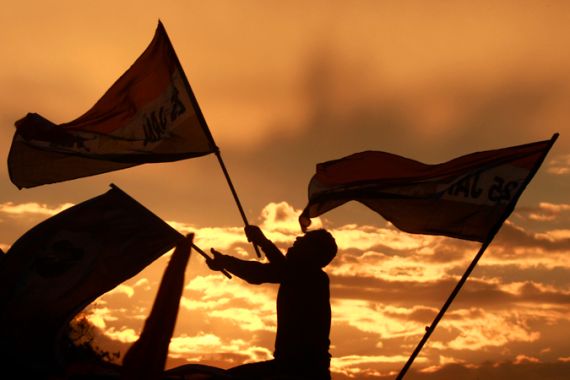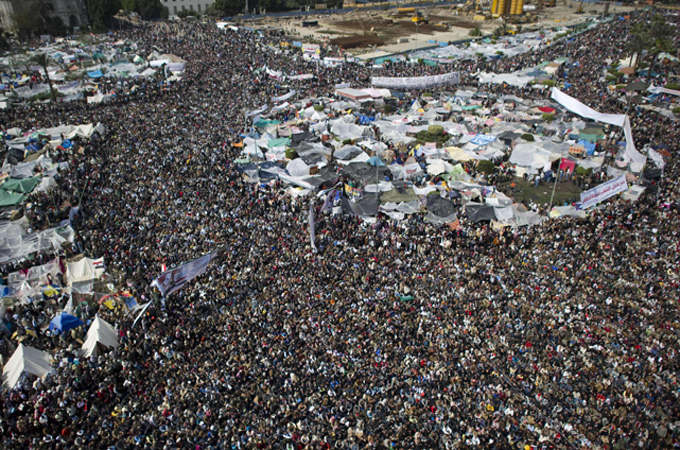Egypt: The revolution and transition
The revolution that overturned a 60-year system of rule captured hearts and eyes across the world.

 |
| Tens of thousands gathered at Tahrir Square during the 18-day protests, as the world watched on [AFP] |
Tunisia was the first domino to fall in the season of Arab uprisings, but when the regime in Cairo began to shake, the eyes of the world turned to one of the most storied and visited countries in history, where a modern revolution was long thought impossible.
Egypt, by far the most populous Arab country, had long served as a lynchpin of repressive stability in the region, and its peace treaty with Israel helped make it a crucial ally of the United States and the recipient of some $1.3bn a year in US aid.
President Hosni Mubarak had been in power for nearly 30 years when protests against his rule broke out in January. The repressive state apparatus that had long hamstrung Egypt’s political development and enshrined corruption as the law of the land was personified in him and his sons, including Gamal, who looked set to succeed him.
With Mubarak’s fall, a system of rule that had lasted for nearly six decades and through four presidents – all of them military officers – would crumble.
 |
| Click to follow Al Jazeera’s coverage of Egypt’s revolution |
Thousands of protesters who turned out on the streets of Cairo on January 25 (the “Day of Rage“) forever broke a barrier of fear, erected over years, of crushed demonstrations. The police forces had always suffocated acts of civil disobedience with brute force and overwhelming numbers, but when Egyptians took Tahrir Square for good on January 28, the “Friday of Rage”, they were defeated for the first time.
As the uprising unfolded, English-speaking Egyptians using Twitter and Facebook kept viewers informed minute by minute, becoming activist celebs. Cairo, a home base and transit hub for hundreds of journalists covering the Middle East, became the stage for a life-or-death drama that unfolded in real time over the course of 18 days on television screens across the world.
As millions of Egyptians from all walks of life protested throughout the country, the movement distilled down to one battleground, the defining symbol of the “Arab Spring”: Tahrir Square. The square stood for the idealistic hope that in the face of even the most repressive ruler, a mass expression of popular will that leapt lines of religion, class, sex and ideology could still force change.
On February 11, the day Mubarak stepped down, the square erupted into flag-waving euphoria of victory as spellbound newscasters sat silently, letting play the noise of anger transmute into shocked joy. The shadow of the military assumed power after Mubarak’s fall. It has governed the country, bloodily, in the months since, casting doubt on Egypt’s future prospects.